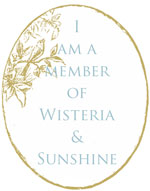a list of things to keep, for the Solstice
/Sunday morning we got up early and went for a walk to watch the (near) Solstice sunrise. The sun was hiding behind a solid bank of stainless steel clouds, so it was more like an awakening than a rising, but we were glad to be out of doors to welcome the turn of the year anyway. It had been raining for hours by then and the path was littered by the last of the fallen leaves and long pink earthworms drummed up from their hideaways; egrets made patient stalks of the farm fields, arrows of geese passed overhead going north and south and every direction in between. I try always to be out in nature near the Solstice. That’s when the carnival of my mind can settle down and I can start thinking about the new year ahead and what I want to bring to it.
I’ve had so many conversations with friends lately trying to make sense of the world as it is, going over and over the possible whys and hows and wondering if it will ever be healed, but this morning watching the light on the winter grasses, I thought how weary I am of the striving, how ready I am to move forward. Not just from 2020, but from a lifetime of carrying too much weight that was never meant for me. Perhaps you can relate.
The lovely Niamh at Fairlyand Cottage posted a video yesterday about the 10 habits she was going to keep in the new year, and it just fit my mood. Let go the striving and focus on carrying good things forward. I thought about it quite a bit last night and made myself a list of things I have been consciously working on and want to continue in the new year.
Here it is.
I want to continue:
moving away from a culture of suspicion and distrust and into my more natural state of openness, belief in the goodness of others, and hopefulness.
releasing myself from relationship and association with those who want to stay in that culture (this is boundary setting for me, not a prescription for anyone else)
releasing myself from dogmas
healing my relationship with the feminine by cultivating friendships with women, removing internalized patriarchy, and believing myself
finding middle ground. Avoiding bandwagons, slogans, labels, and easy jargon. (Work In Progress, for sure)
not internalizing judgement or criticism from people who are not in relationship with me or who have not taken time to understand me
cultivating generosity through deliberate giving, deep gratitude and presence, and a mindset of abundance (another very much Work In Progress)
celebrating the ordinary year with small observances (the Wheel of the Year follows the natural world and makes it easy to be present to the time and place I’m in)
nurturing myself through
daily yoga (I’m doing yin yoga every other day and it is life-changing)
walking (I’d like to double my mileage this year)
herbal infusions (which help balance hormones, mood, and energy levels)
Ayurvedic practices like abhyanga
making small, daily efforts in writing (I’ve tried a lot of schedules, but this is the thing that works best for me, and it’s how I’m jump-starting my practice again after a long Covid-hiatus)
building efficient and sustainable systems in my home and work (more permaculture principles, less waste, less consumption, more focus)
beginning the day with poetry (I copy one poem by hand and read at least one other)
learning new skills (currently: knitting, sourdough, and herbal studies)
delighting in whatever feels magical to me: stories, music, art, nature, friendships, and more
growing flowers everywhere
challenging myself with books and movies that force me to pay close attention, be patient, and stretch my understanding and comfort level (with lots of room for entertainment too, of course!)
working on an ebook version of my first novel to share with everyone
It was such an encouraging practice to sit down at this turn of the season and think about what is already working for me and see that I have actually put many good things in place. I don’t really need to make aspirational lists for the new year. I just need to carry on, a little bit every day. What a good feeling at the end of a year that often felt really bad!
I’d love to hear from you too. What is working for you? What good things have you done and want to keep doing?
Sending my heartfelt wishes for a lovely Christmastide to you all.
Happy Winter!
tonia
Writing soundtrack for this post: Henryk Gorecki, Symphony No. 3
Synchronous:
“My work: to do more than reproduce the toxic stories I inherited and learned…My work: to write poems that make my people feel safe, seen, or otherwise loved…”
Jose Olivarez - Ars Poetica

















